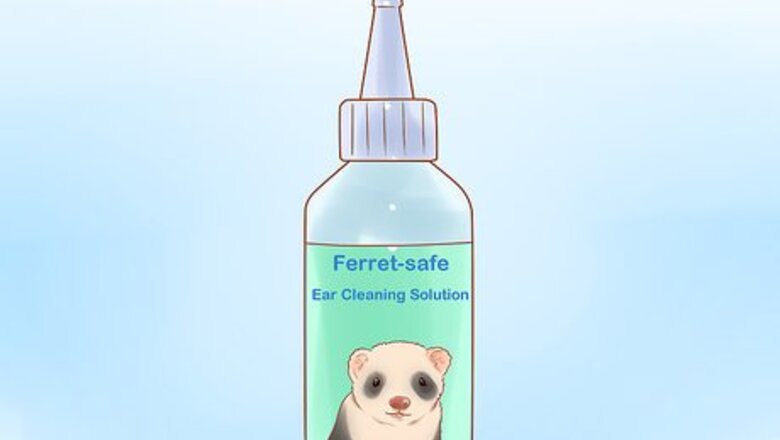
views
Using an Ear-Cleaning Solution
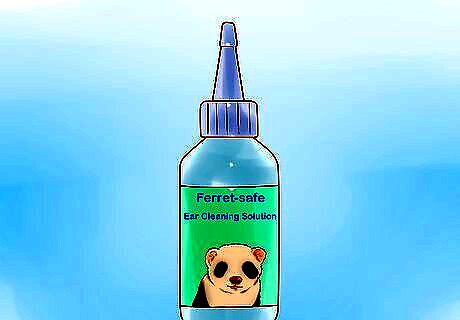
Purchase a ferret-safe ear cleaning solution. Head to a pet store or search an online supplier for potential products. Stick with products that are safe for use with kittens or rabbits. If you're unsure, ask your veterinarian for a recommendation for a reliable product. Make sure the product is labeled for kittens and not just cats and dogs. Never use rubbing alcohol or preparations that are designed to dry out the ear. Avoid mineral oil, which can increase oily ear buildup. Occasional hydrogen peroxide use is OK but has a tendency to dry the ear out.
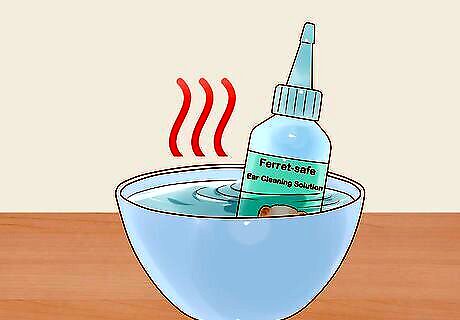
Place your bottle of cleaner in a bowl of warm water for 10 minutes. Cold drops will irritate you ferret—its body temperature is 101 to 103 °F (38 to 39 °C) and doesn't react well to cold. Let your cleaner sit in warm water to increase its temperature and give your ferret as painless an experience as possible! Make sure your cleaner is never 70 °F (21 °C) or less when you apply it to your ferret's ears.

Ask a friend for help cleaning your ferret's ears. Most ferrets will resist having their ears cleaned, and it's a lot easier to do it with help from a friend. Ask them to hold the ferret still while you clean its ears. If you don't have a friend to help, use one hand to scruff the ferret and the other to clean its ear. This will take practice, especially during the first few cleanings when your ferret is most jumpy. Use treats as a distraction to settle your ferret down.
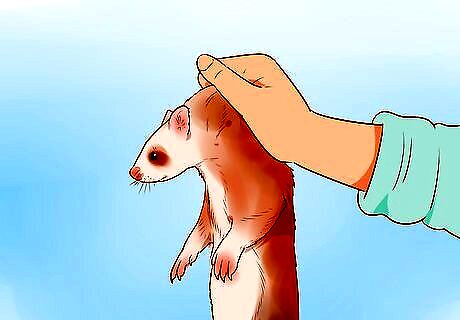
Pick up your ferret by the scruff. The scruff is the loose portion of skin on your ferret's neck located just above its shoulder blades. Grip this area firmly and hold your ferret to its feet so that it can't touch any surface. At this point, your ferret should go limp—if it doesn't, you're not doing it properly. Hold your ferret over a counter or table so it won't fall to the floor if you lose your grip.
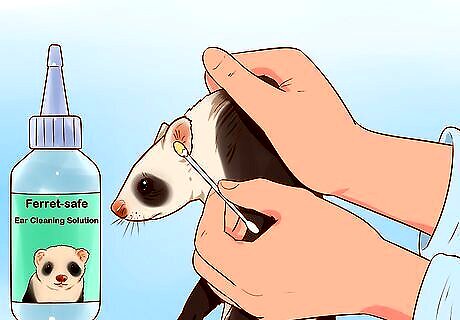
Clean your ferret's ears with a cotton swab and ear-cleaning solution. Start by moistening the cotton swab with your solution. Now, gently wipe the tip through all of the crevices in your ferret's outer ear. Take several swabs if you need to and make sure to remove debris from all of the pockets and folds in the outer ear. Only clean the parts of your ferret's ear that you can see. Never push the cotton swab into the ear canal, even if you can see wax in it. When your cotton swab gets too soaked with cleaning solution, use a dry cotton swab to remove the excess.

Clean your ferret's ears every other week. Regular cleaning for your ferret's ears will reduce wax buildup and minimize odors. Try to time the cleanings during or after bath time for the best results. If you clean your ferret's ears during bath time, make sure that you remove any extra water and soap residue.
Treating Common Ear Problems
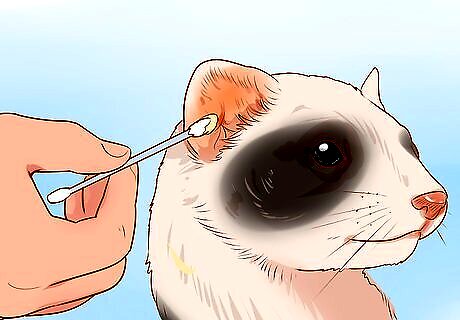
Keep an eye out for ear wax buildup. Your ferret's ear has three parts: the inner ear, the middle ear, and the outer ear. When you clean your ferret's ears, you'll be working with the outer ear, which is where most problems—parasites, infections, and occasional tumors—develop. Ear wax is typically orange, light brown, or reddish in color. If you don't clean remove it regularly, your ferret can experience hearing loss, infections, pressure, and ear mites. Remember that different ferrets have varying amounts and colors of ear wax. A strong odor from the ear is a sign of ear wax. Clean your ferret's ears when you notice signs of wax buildup.

Look out for signs of ear mites. Dark brown, reddish black, or black ear wax are signs of ear mites. When wax buildup gets out of control, ear mites can develop. In addition to its color, ear mite-infested wax differs from standard ear wax in its stronger, more distinct odor. Ear mites cause ferrets to rub their ears on the floor, shake their heads, scratch their ears, and walk with their head tilted. Use a magnifying glass to look for adult mites. Just remember that a veterinarian's microscope is the only way to see mite eggs and larva and thus the most accurate examination.

Visit a veterinarian if you find signs of ear problems or ear mites. If you notice dark wax, crust around the ears, scratching at the ears, or your ferret is becoming withdrawn, visit a veterinarian. Be sure to visit one with experience attending to ferrets. Always check with your veterinarian before administering any medication for ear mites. If your ferret is tilting its head, don't try to treat its ear issues on your own. Always take your ferret to the vet to find out why it's tilting its head. Head tilt can be a symptom of a middle or inner ear infection, which needs treatment. Additionally, if the ear drum is ruptured, putting drops in your ferret's ear can cause serious issues.
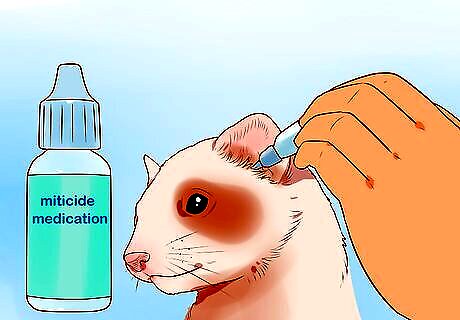
Administer miticide medication to treat ear mites. Make sure the medication is safe for rabbits or kittens—0.05% Pyrethrins is the standard. Squirt the applicable amount of solution into the ear canal, which is part of the outer ear. Afterward, rub it in and repeat the process daily for 14 to 21 days. Take care when applying the medication—ferrets will usually struggle and shake their head as you squirt it, which can cause it to spray everywhere. Purchase miticide medication from pet stores. Ask your veterinarian about once-a-week ivermectin treatment for 2 to 3 weeks if you're not comfortable applying ear medication on your own.



















Comments
0 comment